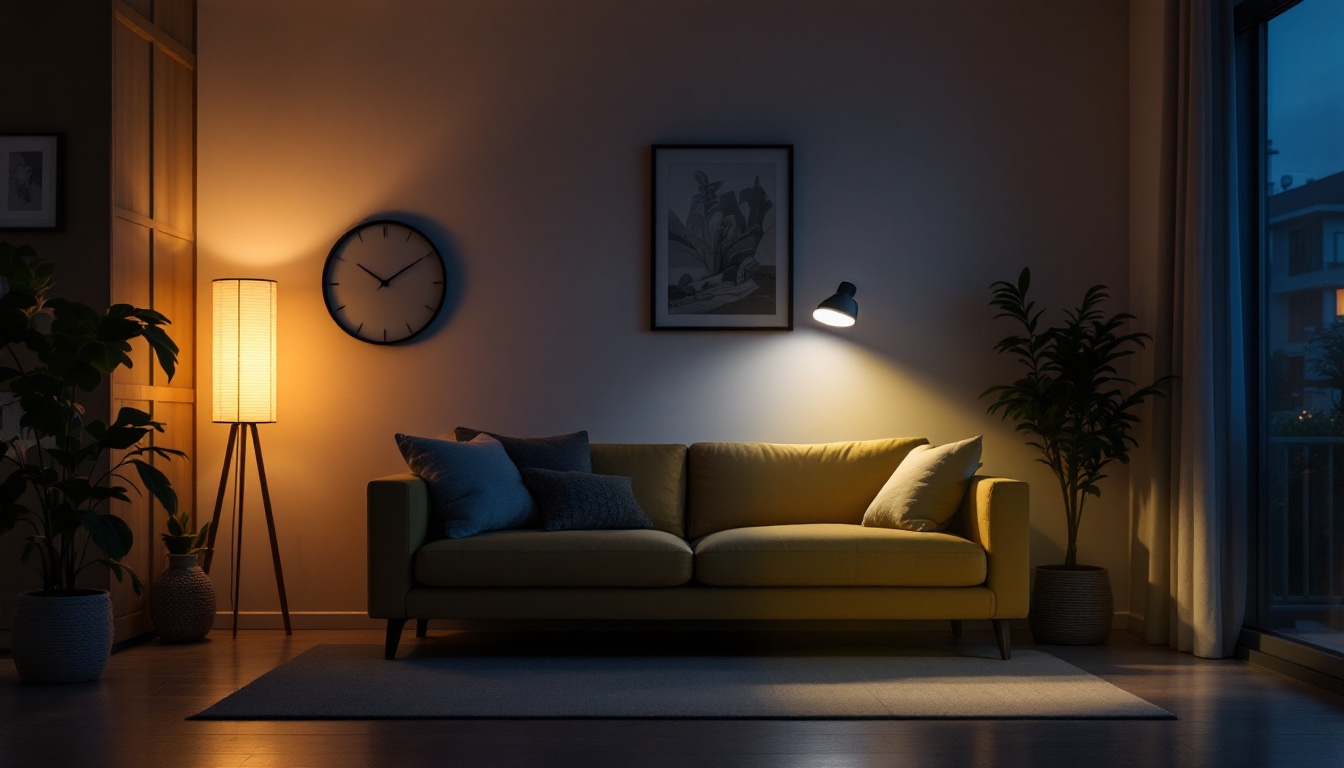
In the rapidly evolving world of lighting technology, LED lighting has emerged as a frontrunner due to its energy efficiency, longevity, and versatility. For lighting contractors, understanding the intricacies of LED products and the common pitfalls in their installation and management is crucial for success. This guide aims to illuminate the path for contractors by highlighting key mistakes to avoid when working with LED lighting.
Light Emitting Diodes (LEDs) are semiconductor devices that emit light when an electric current passes through them. Unlike traditional incandescent bulbs, which produce light through heat, LEDs convert a higher percentage of energy into light, making them significantly more efficient. This fundamental difference is the cornerstone of their growing popularity in residential, commercial, and industrial applications. With energy consumption reduced by up to 80% compared to incandescent bulbs, LEDs not only lower electricity bills but also contribute to a more sustainable environment by reducing greenhouse gas emissions associated with energy production.
However, the technology behind LEDs is complex. Factors such as color temperature, lumens, and wattage must be understood to make informed decisions about which products to use in specific applications. A solid grasp of these concepts will help contractors recommend the best solutions to clients, ensuring satisfaction and repeat business. For instance, color temperature affects the ambiance of a space; warmer tones (around 2700K) create a cozy atmosphere, while cooler tones (above 5000K) are often preferred in workspaces for their clarity and focus-enhancing properties. Understanding these nuances allows contractors to tailor lighting solutions to the specific needs of their clients, enhancing both functionality and aesthetic appeal.
One of the most significant challenges facing lighting contractors is the prevalence of misconceptions surrounding LED technology. For instance, many believe that all LEDs are created equal, which is far from the truth. Variations in quality, efficiency, and lifespan exist among different manufacturers. Educating clients about these differences can prevent dissatisfaction and potential warranty claims. High-quality LEDs often come with better color rendering indexes (CRI), which means they can display colors more accurately, an essential factor in settings like art galleries or retail spaces where color fidelity is crucial.
Additionally, some contractors may overlook the importance of proper heat management. LEDs generate heat, and if not adequately dissipated, this can lead to reduced performance and a shortened lifespan. Understanding the thermal dynamics of LED systems is essential for successful installations. This includes selecting fixtures that allow for proper airflow and using heat sinks effectively. Moreover, the positioning of LEDs in relation to other heat-generating devices can also impact their performance. By addressing these factors, contractors can ensure that their LED installations not only meet but exceed client expectations, providing long-lasting and reliable lighting solutions.
The selection of fixtures is critical when installing LED lighting. Using the wrong type of fixture can lead to performance issues, aesthetic concerns, and safety hazards. For example, not all LED bulbs are compatible with dimmer switches, and using incompatible products can result in flickering or even damage to the bulbs.
Contractors should ensure that the fixtures chosen are designed specifically for LED applications. This includes considering factors such as heat dissipation, lens material, and fixture design. By investing time in selecting the right fixtures, contractors can enhance the longevity and efficiency of their installations.
Another common mistake is neglecting the electrical compatibility of LED products with existing wiring systems. LEDs operate on low voltage and require specific drivers to function correctly. Failing to account for these requirements can lead to installation failures and increased costs.
It is essential to conduct a thorough assessment of the existing electrical infrastructure before proceeding with an installation. This includes checking for compatibility with transformers, drivers, and dimmers. Ensuring that the electrical system is up to code and can support LED technology will prevent costly rework and enhance client satisfaction.
Lighting design is an art as much as it is a science. Many contractors make the mistake of focusing solely on the technical aspects of LED installation while neglecting the aesthetic and functional elements of lighting design. Poor lighting design can lead to uneven illumination, glare, and inadequate lighting for specific tasks.
To avoid these pitfalls, contractors should familiarize themselves with basic lighting design principles, such as layering light, understanding color rendering, and creating focal points. Collaborating with designers or architects can also provide valuable insights into creating effective lighting solutions that meet both functional and aesthetic needs.
Clear communication with clients is paramount in any project, but it becomes even more critical when dealing with LED lighting. Many clients may have unrealistic expectations regarding the performance and appearance of LED products. It is essential to manage these expectations from the outset to avoid dissatisfaction later on.
Contractors should take the time to explain the benefits and limitations of LED technology, including factors such as brightness, color temperature, and potential variations in performance. Providing samples or mock-ups can also help clients visualize the end result, ensuring they are on board with the proposed solutions.
LED lighting systems are known for their longevity, but they still require some level of maintenance to ensure optimal performance. Contractors often overlook the importance of providing clients with guidance on how to care for their new lighting systems. This can lead to premature failures and dissatisfaction.
Educating clients on the importance of regular inspections, cleaning, and the potential need for driver replacements can extend the life of the installation. Providing a simple maintenance guide can empower clients to take an active role in the upkeep of their lighting systems, leading to better performance and prolonged satisfaction.
The quality of LED products can vary significantly between manufacturers. One of the most detrimental mistakes a contractor can make is opting for low-quality products to save costs. While the initial investment may be lower, the long-term consequences can be severe, including frequent replacements and unhappy clients.
It is crucial to research and partner with reputable suppliers who offer high-quality LED products. Look for brands that provide warranties, performance guarantees, and have a proven track record in the industry. Establishing strong relationships with reliable suppliers can also lead to better pricing and support for future projects.
Every region has specific regulations and codes governing lighting installations. Failing to adhere to these standards can lead to legal issues, project delays, and additional costs. Contractors must stay informed about local regulations regarding energy efficiency, safety standards, and installation practices.
Regularly reviewing local codes and participating in industry training can help contractors remain compliant and avoid costly mistakes. Engaging with local building departments or industry associations can also provide valuable insights into best practices and regulatory changes.
After the installation is complete, many contractors make the mistake of overlooking warranty and support options. LED products often come with warranties that protect against defects and performance issues. Failing to communicate these warranties to clients can lead to misunderstandings and potential disputes.
Contractors should ensure that clients are aware of the warranty terms and conditions, including the process for making claims. Providing information on how to contact manufacturers for support can also enhance client satisfaction and trust in the contractor’s services.
Feedback is a valuable tool for improvement, yet many contractors neglect to follow up with clients after project completion. Engaging with clients post-installation can provide insights into their satisfaction levels and highlight areas for improvement.
Establishing a follow-up process can help contractors gather testimonials, address any concerns, and build long-term relationships with clients. This proactive approach not only enhances client satisfaction but can also lead to referrals and repeat business.
The LED lighting industry is constantly evolving, with new technologies and products emerging regularly. Contractors must commit to continuous learning and adaptation to stay competitive. This includes attending industry conferences, participating in training sessions, and staying informed about the latest trends and innovations.
By investing in education and professional development, contractors can enhance their skills and knowledge, ultimately leading to better service for their clients. Staying ahead of industry advancements can also position contractors as trusted experts in the field, attracting more business opportunities.
Building a network of industry contacts can provide valuable resources and support for lighting contractors. Collaborating with other professionals, such as electricians, architects, and interior designers, can lead to new projects and referrals. Networking can also facilitate knowledge sharing, allowing contractors to learn from others’ experiences and best practices.
Participating in local trade associations or online forums can help contractors connect with peers and industry leaders. These relationships can prove beneficial for sharing insights, discussing challenges, and exploring new opportunities in the LED lighting market.
LED lighting offers incredible opportunities for contractors willing to embrace its potential. However, avoiding common mistakes is essential for ensuring successful installations and satisfied clients. By understanding the technology, focusing on proper installation practices, maintaining clear communication, and committing to continuous learning, lighting contractors can thrive in this dynamic industry.
Ultimately, the key to success lies in a proactive approach that prioritizes quality, education, and client satisfaction. By steering clear of these common pitfalls, contractors can position themselves as leaders in the LED lighting market, paving the way for future growth and innovation.
Ready to elevate your LED lighting installations and exceed client expectations? Look no further than LumenWholesale for all your lighting needs. With our commitment to quality, affordability, and convenience, you can access a vast array of top-quality, spec-grade lighting products at unbeatable wholesale prices. Say goodbye to inflated markups and hello to hassle-free bulk buying with free shipping. Don’t compromise on quality or cost—choose LumenWholesale for Wholesale Lighting at the Best Value and light up your projects with confidence.

Discover top strategies for heavy duty switch installation from lighting contractors, boosting safety, efficiency, and durability—essential insights to elevate your projects today!.

Discover how tennis lights can revolutionize your lighting installation projects with enhanced visibility and energy efficiency.

Discover the essential insights into home emergency lighting as we tackle the most common questions posed by lighting contractors.

Discover essential tips for selecting and installing small pot lights to enhance your space without breaking the bank.